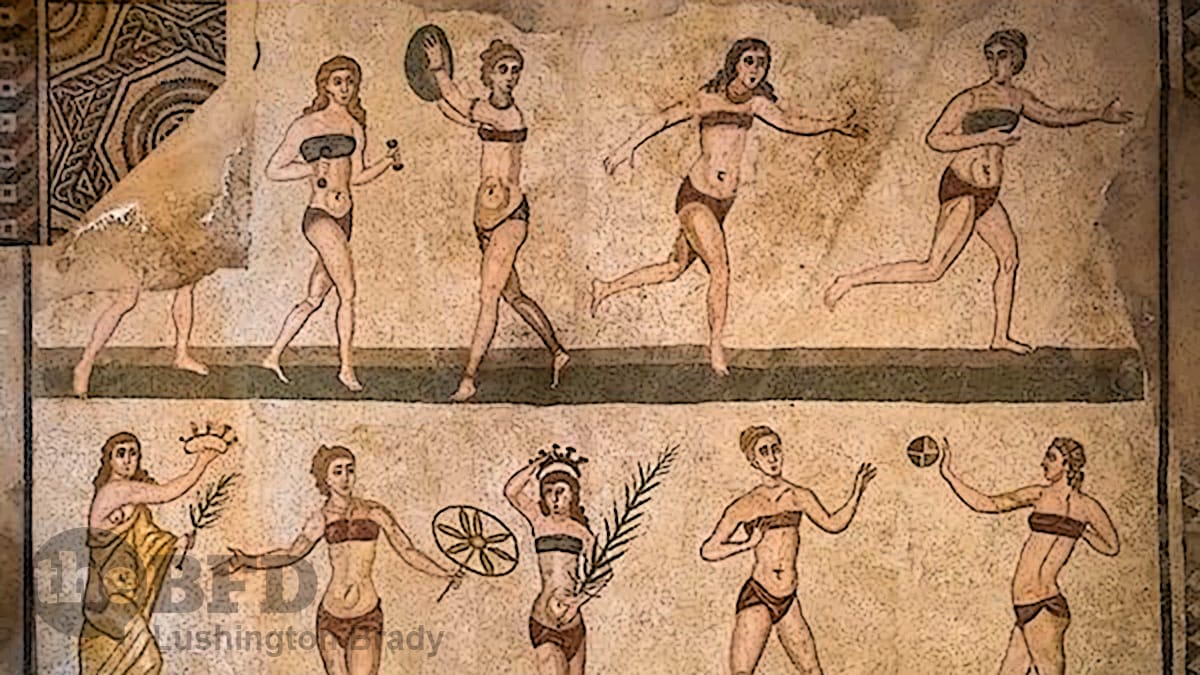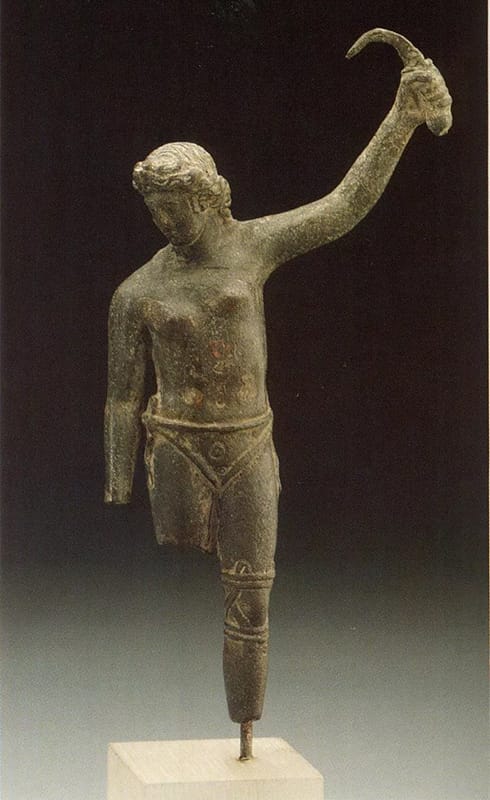Table of Contents
There’s a reason volleyball – especially its beach variety – and tennis are some of the most-watched women’s sports on television. Of course, the global ubiquity of soccer naturally translates to its top-ranking for televised women’s sports, but – let’s be honest here – men especially are tuning into beach volleyball for pretty basic reasons. The sight of athletic young women in short skirts, or better yet, bikinis, is a big drawcard for the mostly (some 70 per cent) male sports fans.
Atavistic and voyeuristic? Of course it is. The male gaze is wired by millions of years of evolution to zero in on young, healthy women – and female athletes, who tend to the Amazonian in build – fit the bill admirably. That this is true, no matter what we might ideologically prefer to be the case is illustrated by the long history of the popularity of female athletic eye candy.
Ancient Rome was one of the more rigorously hyper-masculine cultures in history and their sports-watching habits, too, leaned heavily to the machismo. Roman culture is almost synonymous in the popular imagine with the gladiatorial combats. You’re picturing it, now: buffed-up, oiled Adonises in all that leather and bronze, going at it hammer and tongs.
But, it seems that the Roman equivalent of beach volleyball had its place in the Colosseum, too.

There is a tendency to think of gladiators only as men, thanks largely to some epic Hollywood films. However, women were not uncommon competitors in the amphitheaters around the Roman world, playing out the phony fights and grappling in close combat, much to the delight and carnal titillation of the audiences: the nearest the modern world has come to it, is probably female wrestling. The women were usually warm-up acts providing light relief in between the top-of-the-bill, crowd-pleasing gruesome and gory acts.
Women gladiators might have shared their particular stage, for example, with an elephant walking on a tightrope – as at games arranged by Nero in honor of his mother, Agripinna the Younger, whom he had recently murdered.
Ancient Origins
It no doubt contributed to the popularity of the sport that gladiatrices competed, as the men did, bare-chested. Daniel Mannix’s classic history points out that the Roman equivalent of Tijuana donkey shows were also a part of the games.
But the big drawcard of the games was always the fighting.
And it wasn’t just female slaves pitched into the arenas. For women of all Roman social classes, public sword-swinging was something of the ultimate adrenalin sport.
Women of all classes participated. Enslaved women generally worked for wealthy families, and an entrepreneurial owner might sense an opportunity, says David S Potter, a professor of classics at the University of Michigan who has written extensively about ancient sports. “He’d say, ‘You’re strong. Let’s get you trained as a gladiator. You’ll make a lot of money from your fights.’”
Middle and upper-class women also fought – for the same reasons that young men of privilege did, says Potter: “It’s exciting. It’s different. It pisses off their parents.”
At the time, women engaged in a variety of sports and prized staying in shape, Potter says. Roman officials encouraged them, to build strength for childbirth. Affluent women could afford training and had the leisure time to work out. Professional gladiator troupe managers encouraged those who excelled at wrestling to try gladiatorial combat, which offered money and glamour. “If we think about this as a form of entertainment, it’s clearer why women would want to do it,” says Potter.
History
As ever, the stuffy patriarchy was none to happy about well-to-do young ladies getting their kit off and strapping on a gladius or a fascina.
Roman historian Tacitus expresses outrage by female participation: “Many ladies of distinction, however, and senators, disgraced themselves by appearing in the amphitheater.”
Ancient Origins
According to Roman historian Cassius Dio, Nero held an exhibition in 59 AD “that was at once most disgraceful and most shocking, when men and women not only of the [middle class] but even of the senatorial order…drove horses, killed wild beasts and fought as gladiators, some willingly and some sore against their will” […]
The Roman poet Juvenal mocked men who allowed their wives to fight, writing, “What a great honor it is for a husband to see, at an auction, where his wife’s effects are up for sale, belts, shin-guards, arm-protectors and plumes! … Hear her grunt and groan as she works at it, parrying and thrusting. See her neck bent down under the weight of her helmet.”
In the end, the tut-tutters got their way.
The Roman Senate passed laws in 11 and 19 AD prohibiting middle and upper-class women from fighting as gladiators – apparently to little effect since accounts of high-born women doing so continued for two centuries afterward.
History
Party-pooper emperor Septimius Severus banned female gladiators completely in 200 AD.
Unfortunately, and no doubt to Megan Rapinoe’s disgruntlement, visual history leans heavily in favour of the blokes. In fact, only two surviving works of Roman art unambiguously depict female gladiators.
One is a marble bas-relief, showing two gladiatrices named as Amazon and Achillia, stage names as flamboyant as anything in a WWF bout. The other is a small bronze statue of a woman, wearing only a loincloth, raising a short sword in victory.










